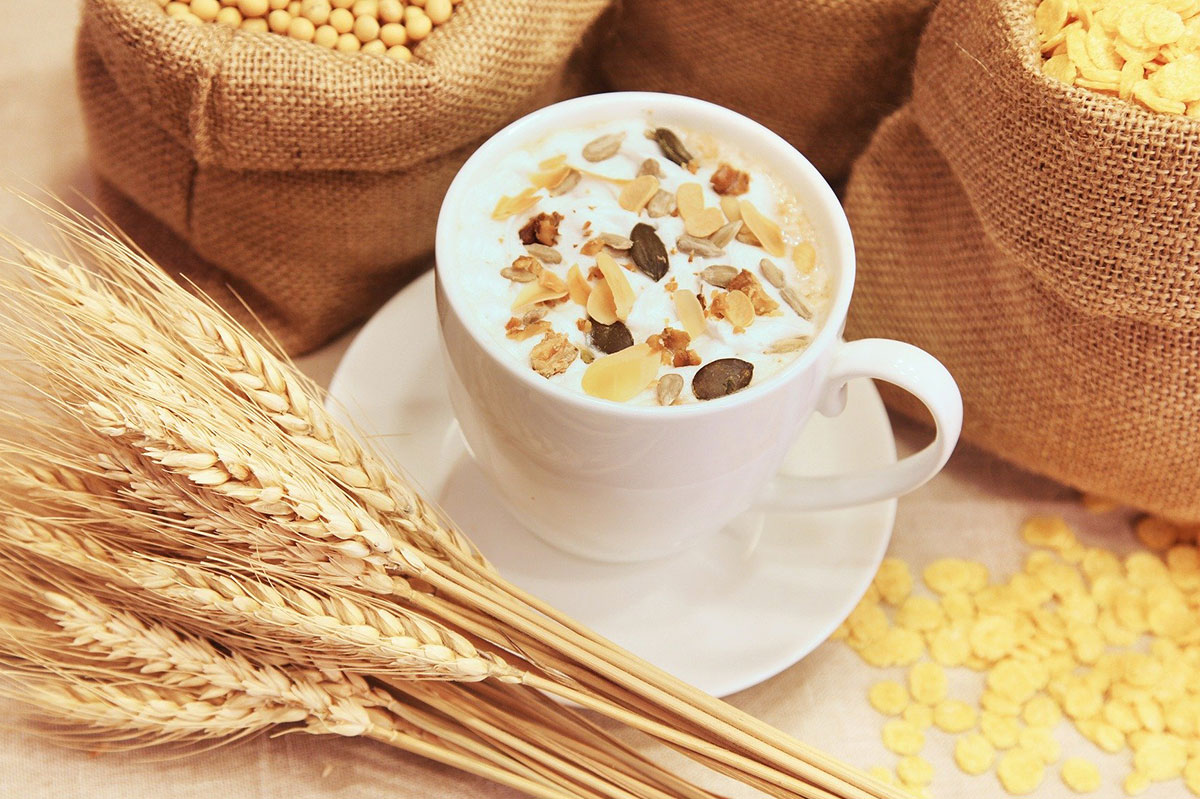
Eat Well! Spring/Summer 2020
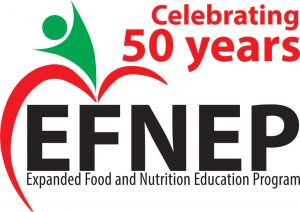
A Newsletter for Healthy Eating!
Inside this Issue:
- Featured Article: Cost of Convenience: Grains
- Food Bites: The Art of Altering Recipes
- Kid’s Korner: Make Your Own Instant Oatmeal Packets
- Ask EFNEP! Chris Finemore, Aroostook County
- Food Safety Corner: Bugs in the Kitchen
- Eat Well Recipe: Rolled Oats Convenience Mix
 Looking for ways to save money on food?
Looking for ways to save money on food?
The EFNEP newsletter has always given you great ideas on how to save money on food. Now these ideas are even easier to spot. Look for this picture in the EFNEP newsletter to find great tips to save money on food. SAVE MONEY.
Featured Article:
Cost of Convenience: Grains
Kate Yerxa, Extension Educator
Grains are one of the five food groups of MyPlate and contain many types of foods. Grain foods include any food made from wheat, rice, oats, cornmeal or barley (MyPlate). Foods such as bread, pasta, cold and hot breakfast cereals, rice, popcorn, oatmeal and tortillas are all part of the MyPlate Grains Group.
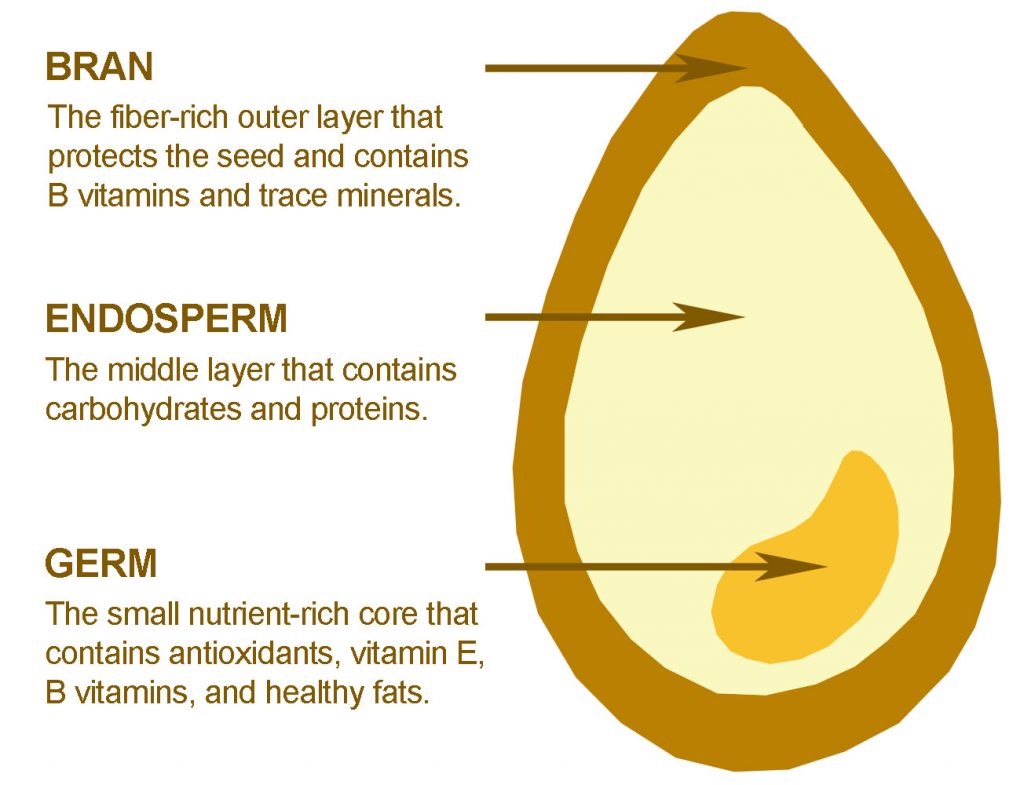 In addition to having a variety of foods, the grains group is divided into two different groups: whole grains and refined grains. Whole grains still have the entire grain kernel which includes the bran, the germ and the endosperm, while refined grains have had the bran and germ removed. This is done to extend the shelf life and create a finer texture of the grain. Removing the bran and germ also removes fiber, iron and several B vitamins from the grain (MyPlate).
In addition to having a variety of foods, the grains group is divided into two different groups: whole grains and refined grains. Whole grains still have the entire grain kernel which includes the bran, the germ and the endosperm, while refined grains have had the bran and germ removed. This is done to extend the shelf life and create a finer texture of the grain. Removing the bran and germ also removes fiber, iron and several B vitamins from the grain (MyPlate).
Surprisingly, refined grain food products tend to cost less than whole grains. This is because whole grain products tend to spoil faster than refined grains because of the fat in the germ. Knowing this, how can you stretch your budget to work toward making half of your grains whole grains? Below are a few tips to make small changes with the grain foods you buy to save money and eat more whole grains. While small changes don’t seem to make an immediate difference, the small changes do add up over time.
- Add whole grains like whole wheat pasta or brown rice to recipes like casseroles or soups.
- Substitute half of the flour in baked goods with whole grain flour. Try oat flour, whole wheat flour, buckwheat flour in muffin, pancake or waffle recipes. Try one of our Whole Wheat Convenience Mix recipes or Rolled Oat Convenience Mix.
- Keep your whole grains fresh and safe to eat. Follow these recommendations from the Whole Grains Council:
| Type of Whole Grain | Storage Recommendations |
|---|---|
| Intact whole grains: brown rice, steel-cut oats and quinoa | Store in airtight containers, will keep for up to 6 months in a cool, dry location, or up to 1 year in the freezer |
| Whole grain flours | Store in airtight containers, will keep for 1 to 3 months in a cool, dry location, or up 2 to 6 months in the freezer |
- Does your whole wheat bread get moldy before you can finish the loaf? Try freezing half of the loaf when you buy it. The best way to save money while eating well is to reduce food waste!
For more information about the grains group and how to add more grains to your diet, visit All About the Grains Group at ChooseMyPlate.gov.

Food Bites:
 The Art of Altering Recipes
The Art of Altering Recipes
By Kate Yerxa, Extension Educator
The current Dietary Guidelines for Americans recommend that we reduce the amount of fat, sugar, and salt that we eat. The same guidelines encourage us to include more fiber in our diets by eating whole grain foods and more fruits and vegetables. One way to improve your diet is by reducing the amount of the foods you normally eat or by eating fewer foods that are high in fat, sugar, and salt. Another way to improve your diet is by altering the recipes of the foods that you are now eating by using less fat, sugar, and salt.
Below are a few tips to reduce the amount of sugar and fat in recipes you prepare:
| Ingredient | Recommendation | Example |
|---|---|---|
| Sugar | Reduce sugar by one-quarter (1/4) or one-third (1/3) in baked goods and desserts. | If a recipe calls for 1 cup of sugar, use 2/3 to ¾ cup of sugar |
| Butter, margarine or oil — in general cooking | Reduce solid fat or oil by one-quarter (1/4) | If a recipe calls for 1 cup of oil, use ¾ cup of oil |
| Butter, margarine or oil — in baking | Use applesauce or another fruit puree for half (1/2) of the fat. You may need to reduce baking time by 25% as well. |
If a recipe calls for 1 cup of oil, use ½ cup fruit puree and ½ cup oil |
Information for this article comes from University of Mane Cooperative Extension’s Bulletin #4167, Altering Recipes for Better Health.
Kid’s Korner:
Make Your Own Instant Oatmeal Packets
Be sure to supervise children in the kitchen, especially around knives and the oven!
Ingredients
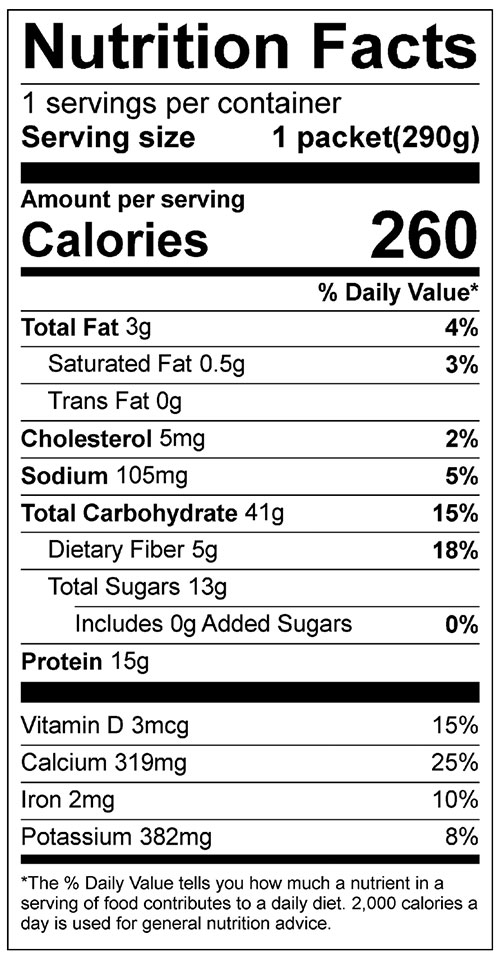 ½ cup quick oats
½ cup quick oats
1 cup water or milk
Apple Cinnamon Option: Add 1 teaspoon sugar, ¼ teaspoon cinnamon, and 2 tablespoons apples (chopped and dried)
Cinnamon Raisin Option: Add 2 teaspoons packed brown sugar, ¼ teaspoon cinnamon, and 2 tablespoons raisins
Cinnamon Spice Option: Add 1 teaspoon sugar, ¼ teaspoon cinnamon, and ⅛ teaspoon nutmeg
Cocoa Option: Add 1 teaspoon baking cocoa and 1 teaspoon sugar, or 2 teaspoons “quick-type” chocolate drink powder
Directions
- Put quick oats and optional ingredients into a plastic snack or sandwich bag.
- Seal bag and store for future use.
- When ready to use, empty packet into microwave safe bowl.
- Stir in 1 cup of water or milk.
- Microwave on high 2½ – 3 minutes.
- Stir before serving.
This recipe is provided by Iowa State University Extension and Outreach. For more recipes like this, visit Iowa State University Recipes.
(Nutrition facts label is for plain oatmeal made with water)
Ask EFNEP!
Chris Finemore, Aroostook County
Chris Finemore has worked for the University of Maine Cooperative Extension Eat Well Nutrition Program in Aroostook County for 28 years. Chris’ favorite part of the job is cooking with kids. “I enjoy seeing them have success in the kitchen; with home economics being removed from schools, I see this as a very important part of my job. Independent living skills need to be taught hands-on.”
Living on a working homestead with her husband, son and two grandchildren, Chris has the opportunity to do all of the things that she really loves; spend time with her family, gardening, food preservation and kayaking.
Q: What is the difference between “sell by”, “use by” and “best if used by” date on food packaging? Is the food still good to eat after the sell by date?
A: Here is a quick explanation of each of these terms:
- Sell By Date: this is the date that a store should sell the product.
- Use By Date: this is the last date recommended for use of the food at peak quality. If stored correctly, the food product is safe to eat up to one week after the date.
- Best if Used By or Best Before Date: these are freshness dates — the date recommended for best flavor and quality. Foods such as baked goods, cereals and frozen entrees will have Best if Used By dating. The foods with this type of dating is safe to eat after the date, but not at it’s best quality.
Yes, the food is still good to eat. Fresh meat, fish, and poultry should be cooked within a day or two of home refrigeration or placed in the freezer for longer storage.

Food Safety Corner:
Bugs in the Kitchen
By Elizabeth Kowash, UMaine Dietetic Intern

What is a weevil or a “flour bug”?
A weevil is a small beetle that grows and lives inside grain products (flour, whole grain, pasta, rice, cereal).
How do weevils get into flour/grain products?
Female weevils lay their eggs inside the wheat kernel. Most of the time the eggs do not survive the wheat milling process, however there are times that they do. Weevils that survive, mate with one another in the grain product to reproduce, and then continue to live off of the grain products. They are able to chew through plastic, cardboard and paper bags so they can travel to other forms of grain in the pantry.
How to identify a weevil:
A weevil is generally 1/8 – 1/4 inches long. They are brown/black in color. They are most easily identified by their long snout. Weevils can live up to 8 months.
Take note: These insects will die from both hot and cold temperatures. Therefore, they usually die when food is being baked, or frozen. A lot of people have consumed these insects however the consumption of these insects is not life-threatening.
How to get rid of weevils:
- Get rid of the infested item.
- Remove everything from infested area.
- Vacuum out cracks and wipe shelves with a sanitizing mixture of equal parts white vinegar and water.
- Check areas daily for re-infestation.
- Clean storage areas regularly.
How to prevent weevils:
- Store dry goods properly (freeze newly purchased grain items for at least 3 days to kill any eggs).
- Do not buy more grain/grain products than needed. This is an item that can go bad in two months or sooner.
- Store grains in tightly sealed containers (weevils can chew through plastic bags, paper, and cardboard).
- Keep food closet/pantry clean.
- Add whole bay leaves and garlic to areas where grain products are.
- Apply tea tree oil to cotton balls and place them in selected areas of the food closet/pantry.
Adapted from: University of Minnesota Extension. Pantry pests: Insects found in stored food. 2018.
Quick and Easy Eat Well Recipe:
Rolled Oats Convenience Mix
Ingredients
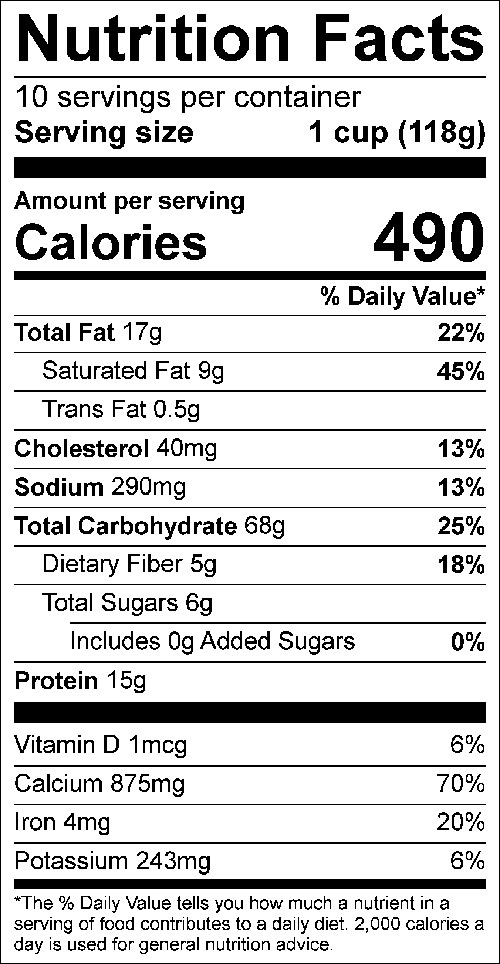 4 cups flour
4 cups flour
1 teaspoon salt
4 cups quick-cooking oats (not instant)
1/4 cup baking powder
1 1/2 cups nonfat dry milk
3/4 cup butter or margarine
Directions
- Put all ingredients except butter in a large bowl and stir until very well mixed.
- Cut in butter with a fork or pastry cutter until well blended.
- Store in airtight glass jars or canisters and refrigerate up to 1 month.
Makes 10 cups
NOTE: To measure, spoon into the cup, pack lightly, and level off.
Try making the Applesauce Cookies or Oat-Raisin Cookies with the Rolled Oat Convenience Mix.
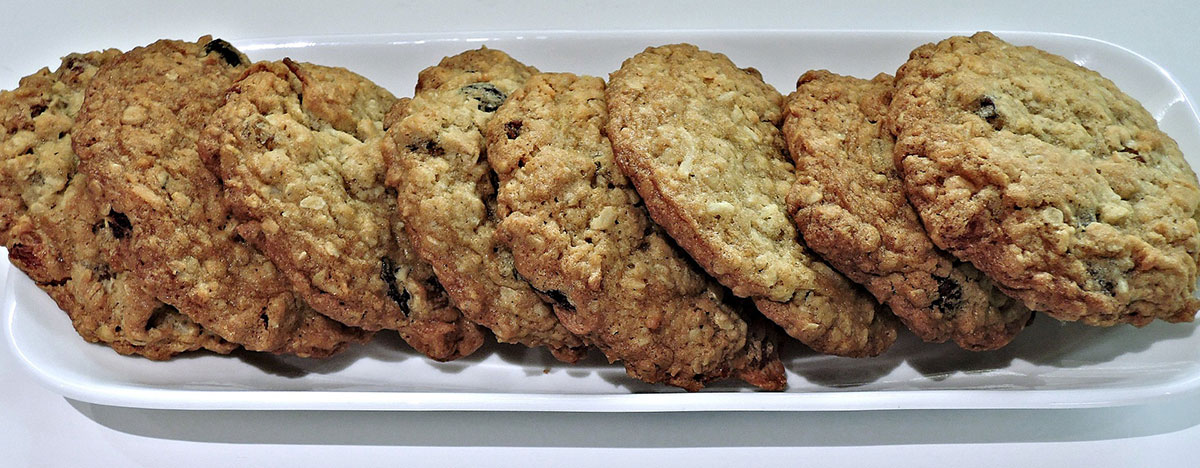
The EFNEP newsletter is published two times a year for current, past, and future UMaine Extension Expanded Food and Nutrition Education Program participants. For more information on the EFNEP program, contact your UMaine Extension county office.
Managing Editor: Kate Yerxa, MS, RD
EFNEP Committee: Kathleen Savoie, MS, RD, Extension Educator; Kate Yerxa, MS, RD, Extension Educator; Alex Gayton, MS, RD, Nutrition Education Professional, and Brenda Bracy, Community Education Assistant.
This material was funded by the National Institute for Food and Agriculture’s (NIFA) Expanded Food and Nutrition Education Program (EFNEP).
Information in this publication is provided purely for educational purposes. No responsibility is assumed for any problems associated with the use of products or services mentioned. No endorsement of products or companies is intended, nor is criticism of unnamed products or companies implied.
© 2020
The University of Maine is an EEO/AA employer and does not discriminate on the grounds of race, color, religion, sex, sexual orientation, transgender status, gender expression, national origin, citizenship status, age, disability, genetic information or veteran’s status in employment, education, and all other programs and activities. The following person has been designated to handle inquiries regarding non-discrimination policies: Director of Equal Opportunity, 101 North Stevens Hall, University of Maine, Orono, ME 04469-5754, 207.581.1226, TTY 711 (Maine Relay System).

